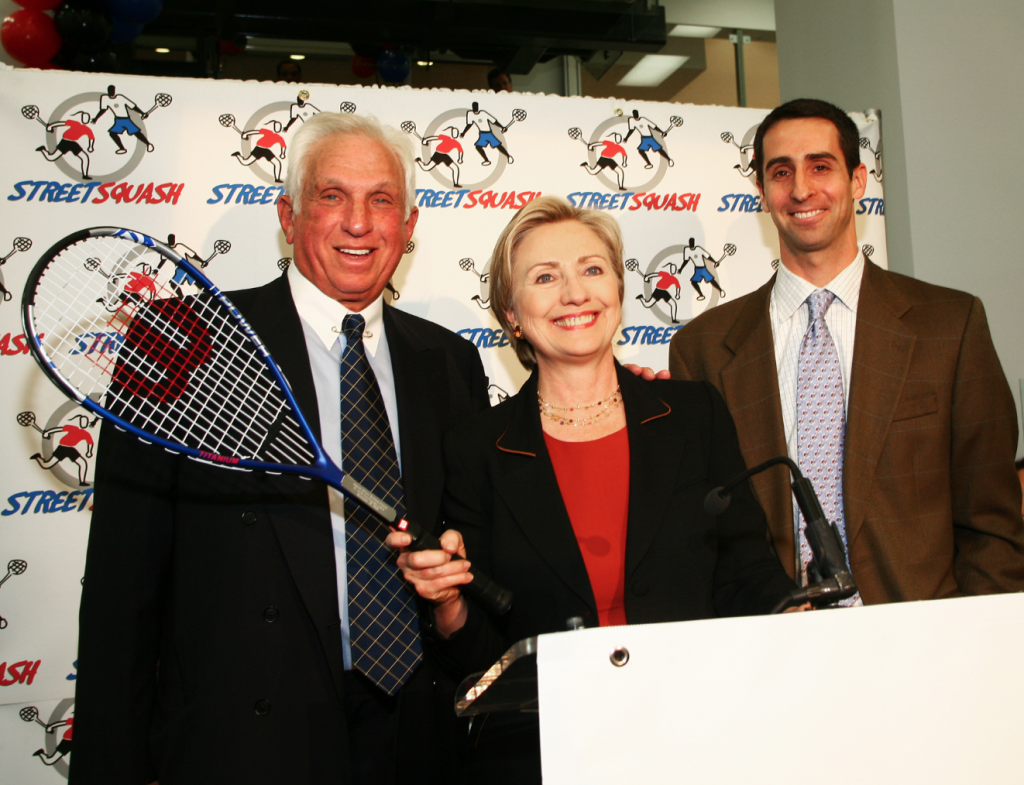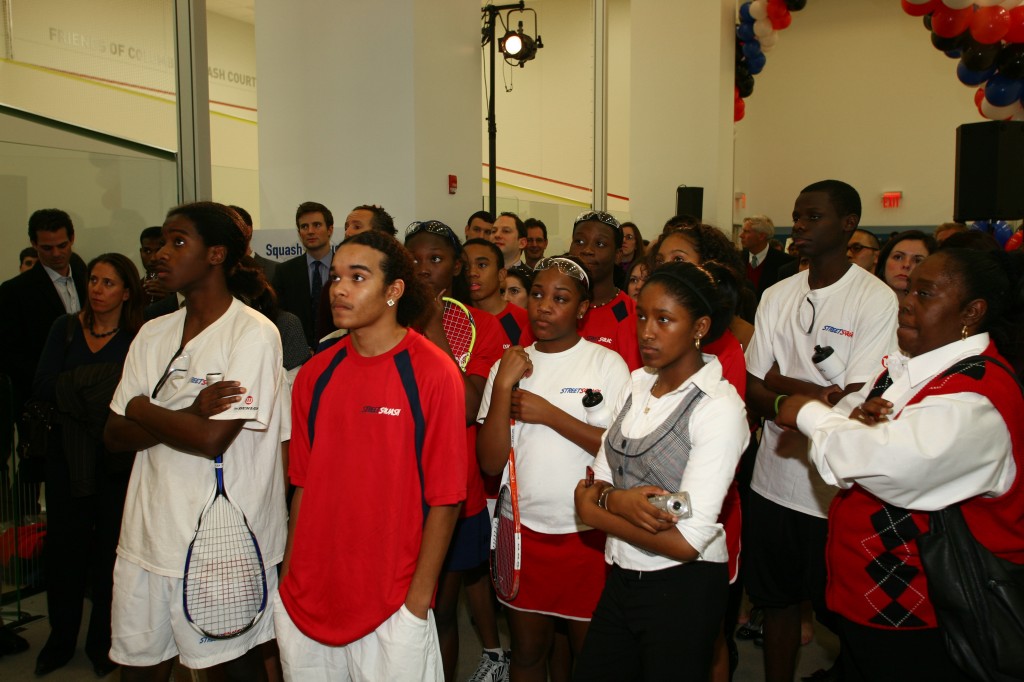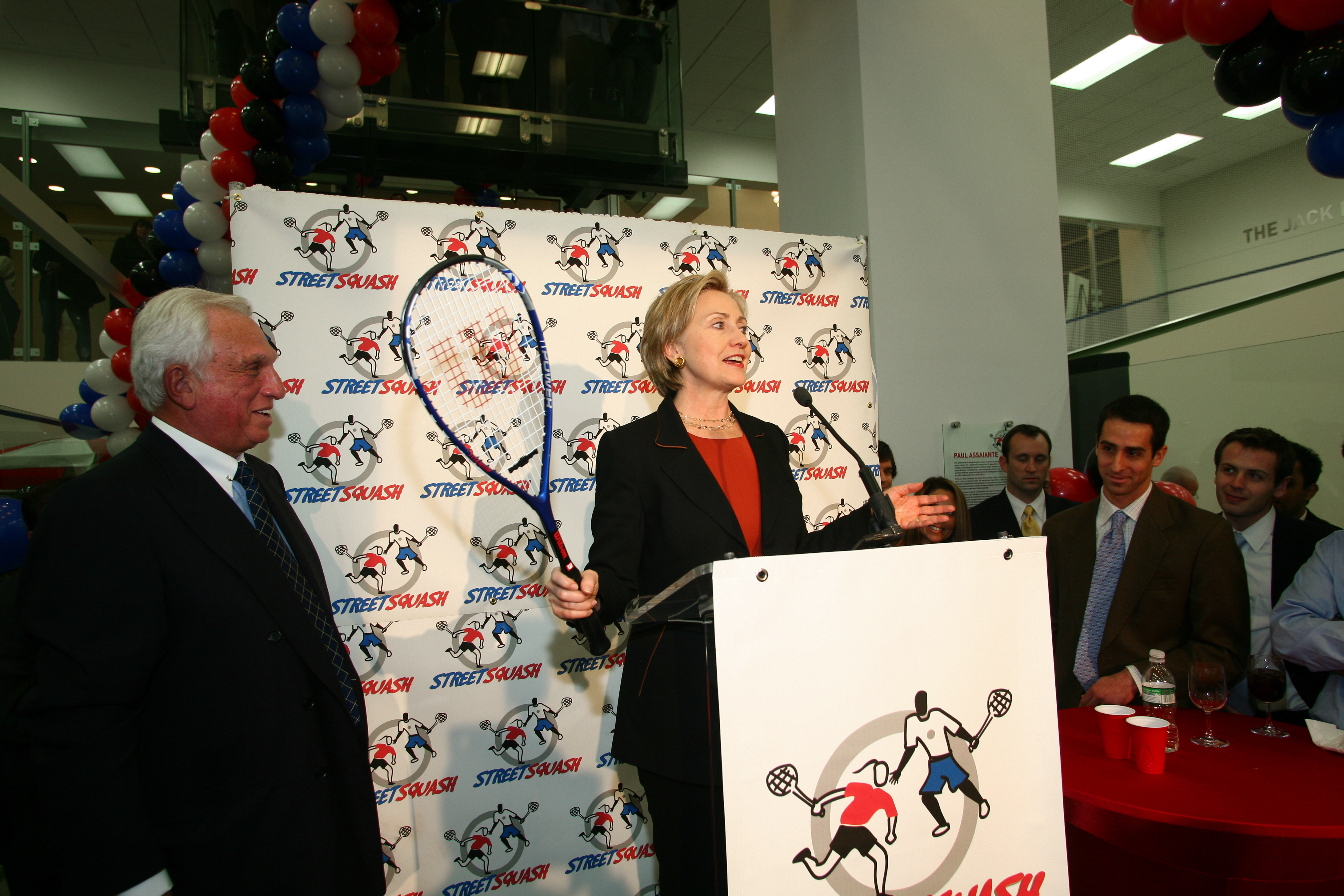
By James Zug
It started ten years ago with meetings in George Polsky’s Manhattan apartment. A second-year masters student in social work, Polsky had just gotten back from playing squash in the Maccabiah Games. The captain of the team was Greg Zaff, who had spent much of the time in Israel, suggesting Polsky emulate his SquashBusters program in New York. Polsky held a couple of meetings—“with hummus and carrots as the meal”—with Leslie Kimerling and another member of the Maccabiah touring group, Jeffrey Laikind.

A decade later, the third urban squash program facility, the SL Green StreetSquash Center, opened on 20 November 2008.
The mere fact of its existence is amazing, considering this is Manhattan: dwell on how expensive the real estate market is and how complex the red tape is and you’ll begin to appreciate the enormity of the project. The other two urban squash programs with facilities had key assistance: SquashBusters partnered with Northeastern University, and SquashSmarts with the Police Athletic League. StreetSquash was all alone.
But with a seven-figure lead gift from real estate developer Steve Green, George Polsky pulled it off. At 115th Street and Fifth Avenue in the heart of Harlem, there is a $9 million beauty: 18,700 square feet, three floors, four classrooms, an enormous JPMorgan library, two sets of locker rooms and offices. It is a glassy, open space. Out on 115th, the façade is bold and eye-catching.
Oh and did we mention eight courts? Eight makes it the largest squash facility in New York. And certainly the busiest. Until the move this fall to the new facility, StreetSquash was based at Columbia University and in return for nine years of hosting, Columbia is now moving its soon-to-be varsity men’s and women’s teams to the new center. (How amazing is it that it took an urban squash program to start the last Ivy League college’s varsity squash team.) The center will also host training sessions for our national teams, as well as many NUSEA team matches and tournaments.
 Most of all, StreetSquash will be even more connected to the Harlem community. The number of kids in the program will jump to 160 a year. In the summer they will have 300 there for camps, and they are partnering with five nearby public schools to provide physical education to over 750 kids each week.
Most of all, StreetSquash will be even more connected to the Harlem community. The number of kids in the program will jump to 160 a year. In the summer they will have 300 there for camps, and they are partnering with five nearby public schools to provide physical education to over 750 kids each week.
The opening last November was appropriately celebratory. There was a live jazz band (StreetSquash is keen on jazz), balloons and throngs of people. Special guests included Manhattan borough president Scott Stringer, city council member Inez Dickens, and Davian Suckoo, a member of the first StreetSquash team back in 1999, who is now about to graduate from the University of Buffalo. Then-New York Senator Hillary Rodham Clinton was the keynote speaker. Clinton met with the students and staff privately and then gave a gracious speech, even adroitly dodging a reporter’s question about whether she would take the secretary of state job if offered. Wielding a racquet, she admitted that she had played squash twice, but that the SL Green StreetSquash Center was “a real model on how to add vitality to our city.”





